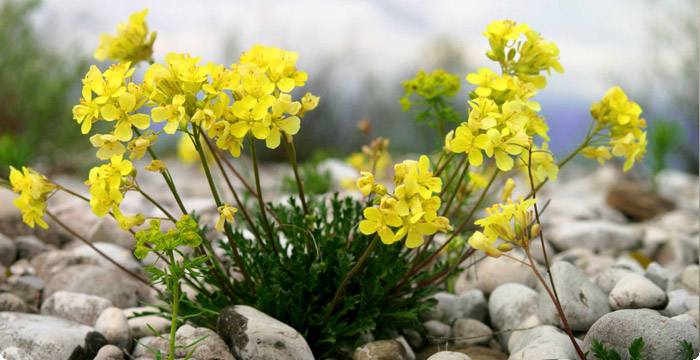CELLINA DRY GRASSLANDS SCI - VEGETATION AND HABITAT
A SITE RICH OF PLANT SPECIES
The biological richness of the Magredi in additiion to be dependent from their particular ecology and placement, is amplified by the privileged position as Junction of our region and then by the coexistence of different distribution areas on which the various vegetal species are gravitating. In particular inside Magredi can be recognized a contingent of botanical species of illiric origin (Adriatic coast of the Balkan peninsula), subpontic (regions at the edge of the Black Sea) and alpine, that is continuously transported from upstream to downstream along the river beds by the action of streams. A contingent of endemic species originated in the particular context in which Magredi are can also be seen.
FROM RIVERBED PIONEER VEGETATION TO THE ADVANCED MAGREDI OF DANDOLO
One of the most important aspects of the Magredi of Cellina is represented by the presence of the entire sequence of the plant associations typical of dry meadows that starting from the riverbed, that is the most primitive conditions of the soil, grow until it reaches more advanced stages in corrispondence of the most peripheral fluvial terraces and alluvial plains (the most distant from the river). Starting from the end of the last glaciation the stream began to weigh on its own deposits creating a series of levels (river terraces) where soil and vegetation appear more mature and evolved as we move more peripheral to the river. On the riverbed there are pioneer species from which, through a succession of more primitive grasslands, the stage of the most advanced Chrysopogonetus is reached (vegetation where prevail Chrysopogon gryllus). This vegetation looks like a prairie that continues to spread over a relatively mature and dry ground "ferrettizzato" (ie reddish for the surface presence of chemical elements less soluble and erodible such as oxides of iron and aluminum). In Magredi of Cellina there are all stages, from least to most evolved, which characterize the habitats of Community interest identified by the code 62A0. The Magredi of Cellina as well as representing the horizon of permanent meadows of the entire valley, is also the place where the whole evolutionary sequence shown above is best represented and are, for this reason, a unique environment not only in the national and European context. In the most primitive environments of Cellina Magredi there are many rare and special species among which: la violacciocca alpine stock (Matthiola fruticolosa), the milkworts (Polygala nicaeensis forojulensis), the silky broom (Genista sericea), the feather grass (Stipa eriocaulis ssp. Austrian), the Tatari's cabbage (Crambe tataria). The latter is a species of Community interest because the Magredi of Cellina is the only station presence in Italy. The contact points between the Magredi and pioneer vegetation of the riverbed is the rare and endemic Friuli cabbage (Brassica glabrescens), a unique botanical species included in the list of species of Community interest.
HABITAT OF COMMUNITY INTEREST
Below are the coverage ratios of the three main habitats of Community interest.
62A0 sub-Mediterranean dry grasslands of the eastern region (Scorzoneretalia Villosae) 53%
3220 Alpine rivers and the herbaceous vegetation along their banks 31%
3240 Alpine rivers and their ligneous vegetation with Salix elaeagnos 4%







